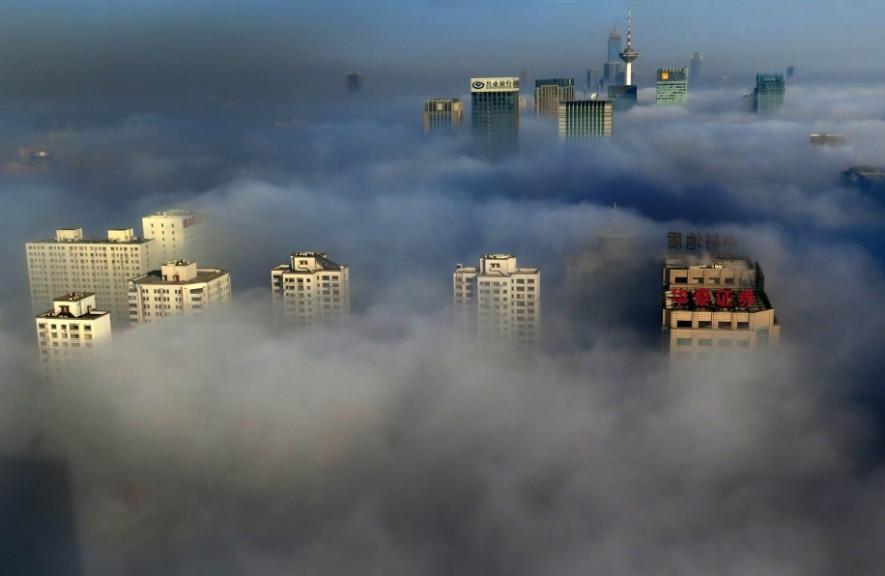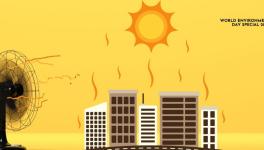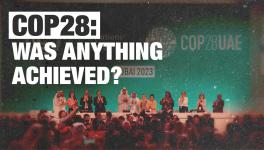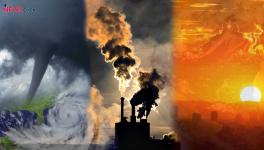City’s Vision for the Future: Sustainable, Inclusive, Resilient and Safe

The attention of global forces representing cities is keener to know how the planet earth will be shaped for the future. The COP-21 climate change talks had set a target of keeping the rise in global temperature to less than 2 degrees centigrade. And for that, all the nations will have to play a major role in reducing their carbon footprint.
Historically, the developed capitalist world has taken the largest carbon space by massive production and changing the lifestyles of its people. Presently, the per capita carbon emissions footprint of US -16.4 tonnes and Canada -13.5 tonnes outnumbers the developing countries like India 1.6- tonnes and China-7. 6 tonnes. Hence there is a common but differential responsibility of different countries, which is to be shared in the same manner.
The developed nations guided by their ruling class interests have developed an unsustainable model of development over a period of time. Take for example the two major players – the US and Canada; they have developed their roads and highways across the continent because the two major giants- the automobile capital and the oil capital wanted its consumption to be absorbed. A family of four in these two big countries will not have less than the same number of cars. But, this is not a sustainable model of development.
Also Read: The Systemic Failure of City Administrations
The developed world also has a greater responsibility to not only reduce its own carbon footprint but also to ensure transfer of green technologies to the developing world and render help to them to climb the ladder of development.
However, the stark announcement made by Trump to withdraw from the climate deal puts the entire process of joint interventions in a squander. Not only will it affect the strategic interventions by the largest polluter on earth (US), but will also affect other parts of the globe. Though, an opposition to his whimsical orders is also quite evident within the US itself. The governor of California and a former movie star, Arnold, was quite critical about his coal strategy. A mayor from a city in Colorado region described Trump as inconsistent with his words and does not know where he is going to lead the country. Nevertheless, he was optimistic that the people and the cities will be shaping their futures themselves.
The cities are growing so is the number of people living in them. By 2030 more than 60 percent of the people will live in the cities. These are considered to be the engines of growth, however the cities are also responsible for 75 percent of energy consumption and 65 percent of carbon emissions. Hence the cities have a greater role to play in order to control the emission of carbon gases. But can the cities discharge what they are supposed to do? Are the cities sovereign from their federal government to work in tangent to them? We know they are not and cannot decide their futures delinked from their federal and provincial counterparts. But that does not mean that the cities cannot build alternatives of people’s development which is also low on carbon emissions.
THE MONTREAL CONGRESS
More than 1000 delegates from the urban spectrum gathered in the city of Montreal for the world congress of cities to discuss their success and stories of failure in order to achieve the goals of sustainable development.
The Montreal commitment and strategic vision, adopted by the cities through its representatives, orients their path towards urban transformation and sets a course for delivering on the global sustainable development agenda. This has to happen with initiatives and partnerships and also projects worldwide for low carbon emissions.
This is supposedly with a new vision which aligns with the global frameworks. It is critical to have global consensus around sustainable development so that political will, systems and resources are oriented in the same direction quoted the vision document.
The UN sustainable development goals (SDGs) are a universal and collective vision, with SDG -11(make cities inclusive, safe, resilient and sustainable) as the central lever to attain all other goals. The Paris Climate Agreement is the prerequisite to safeguard all SDGs and pioneer the transformation towards a new model of a climate-safe human civilization. The new urban agenda is a compendium of good practices and policies for urban development, including the right-to-the-city, multilevel governance and urban planning.
Also Read: Increasing Carbon Emission and Sustainable Development
The roadmap for the delivery of these goals and aspirations was also discussed. The vision defines low emission, nature-based, circular, resilient and equitable development with five interconnected pathways towards sustainability, supported by policy approaches on governance, innovation and finance.
The action plan is for partnership with the local and regional governments across the spectrum to accelerate and leap frog sustainable, integrated urban and territorial development, as a means to support and complement national contributions and global sustainability goals.
The highlights have been to promote an action plan for 100 percent renewable energy. Develop urban low emission, climate resilient, mobility friendly development strategies and monitor their implementation. Lead the transition to a green economy through leading sustainable public procurement networks. Connect climate action to urban development and engage local and regional governments in making nationally determined contributions (NDCs) fit for the Paris Agreement. Support island communities at the front line of climate challenges and address land-based ocean pollution. Lead the implementation of global biodiversity targets at the city and regional level.
Hell is a city much like London --
A populous and a smoky city;
There are all sorts of people undone,
And there is little or no fun done;
Small justice shown, and still less pity.
This narrative of cities depicted by none less than PB Shelly the famous poet two centuries ago still holds good for a large number of cities in the world. The point however is to change this narrative.
Get the latest reports & analysis with people's perspective on Protests, movements & deep analytical videos, discussions of the current affairs in your Telegram app. Subscribe to NewsClick's Telegram channel & get Real-Time updates on stories, as they get published on our website.























